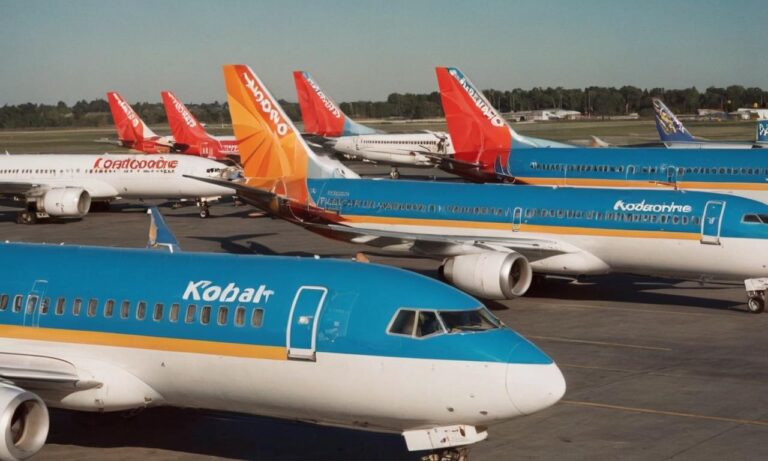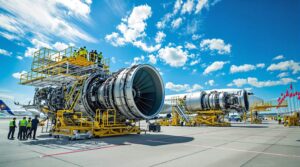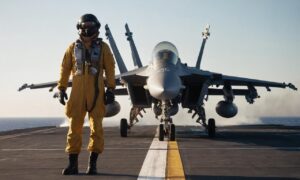When it comes to aviation, the term “narrow-body aircraft” refers to airplanes with a single aisle, typically designed to accommodate a range of passengers for short to medium-haul flights. These versatile aircraft are a crucial component of the global aviation industry, connecting people and places efficiently. In this comprehensive list, we explore some of the most notable narrow-body aircraft that have left a lasting impact on the world of aviation.
The Workhorses of the Sky
Narrow-body aircraft, also known as single-aisle or short-haul aircraft, are the workhorses of the sky. They are widely used by airlines for regional and domestic routes, providing cost-effective solutions for short to medium-distance travel. These aircraft are renowned for their fuel efficiency and flexibility, making them indispensable in the ever-evolving landscape of air travel.
Boeing 737 Series
The Boeing 737 series stands as one of the most iconic and successful narrow-body aircraft families in aviation history. Introduced in the 1960s, the 737 has undergone numerous upgrades and iterations, becoming a staple for airlines around the world. With a remarkable balance of range, capacity, and efficiency, the Boeing 737 continues to dominate the narrow-body market.
Airbus A320 Family
On the European front, the Airbus A320 family has emerged as a formidable competitor to the Boeing 737. Introduced in the late 1980s, the A320 family includes various models, such as the A318, A319, A320, and A321. These aircraft boast advanced technology, impressive fuel efficiency, and a spacious cabin, making them popular among airlines seeking modern solutions for short-haul flights.
Regional Champions
While the Boeing 737 and Airbus A320 families are global heavyweights, there are other narrow-body aircraft that excel in regional markets. These airplanes are designed to cater to specific needs, offering tailored solutions for airlines operating in diverse geographical and operational conditions.
Embraer E-Jet Series
Brazilian aircraft manufacturer Embraer has made significant contributions to the narrow-body segment with its E-Jet series. Comprising the E170, E175, E190, and E195 models, these jets are celebrated for their efficiency, passenger comfort, and adaptability to various routes. The Embraer E-Jet series has carved a niche in regional aviation, serving as a reliable choice for airlines operating shorter distances.
McDonnell Douglas MD-80 Series
While no longer in production, the McDonnell Douglas MD-80 series has left a lasting legacy in the narrow-body category. Introduced in the late 1970s, these aircraft were widely used for domestic flights and are still remembered for their distinctive T-tail design. Though fewer in number today, the MD-80 series played a crucial role in shaping the history of narrow-body aviation.
The Future of Narrow-Body Aviation
As technology continues to advance, the future of narrow-body aviation holds exciting possibilities. Aircraft manufacturers are investing in research and development to create the next generation of single-aisle airplanes, promising even greater efficiency, reduced environmental impact, and enhanced passenger experiences.
COMAC C919
China’s entry into the narrow-body aircraft market is marked by the COMAC C919. As a relatively newcomer, the C919 aims to compete with established players like Boeing and Airbus. With a focus on modern design and advanced technology, the C919 signifies the evolving landscape of narrow-body aviation on a global scale.
Bombardier CSeries (Airbus A220)
The Bombardier CSeries, now part of the Airbus A220 family, represents a collaboration between Canadian and European aerospace companies. This series, including the A220-100 and A220-300, brings innovations such as fuel efficiency and reduced environmental impact. The Airbus A220 is poised to play a significant role in shaping the future of narrow-body aircraft.
In conclusion, the list of narrow-body aircraft is extensive, encompassing a rich history of innovation and evolution. From the stalwarts like the Boeing 737 and Airbus A320 to regional champions like the Embraer E-Jet series, each aircraft has contributed to the dynamic tapestry of aviation. As we look ahead, the emergence of new players like the COMAC C919 and the continued development of existing models indicate a promising future for narrow-body aviation.
Exploring Design Innovations
Beyond their operational capabilities, narrow-body aircraft have also witnessed remarkable design innovations. These developments go beyond mere functionality, focusing on enhancing passenger experience, reducing environmental impact, and improving overall efficiency.
Blended Winglets
One noteworthy design enhancement seen in modern narrow-body aircraft is the incorporation of blended winglets. These wing extensions, featuring a smooth blend with the wingtip, contribute to reduced drag and improved fuel efficiency. Airlines are increasingly adopting this technology to enhance the overall performance of their fleets.
Advanced Materials and Composites
The use of advanced materials and composites is another area of design evolution in narrow-body aviation. Manufacturers are exploring lightweight yet durable materials to construct aircraft components, leading to increased fuel efficiency and reduced environmental impact. The pursuit of sustainability is reshaping the materials landscape in the aviation industry.
Frequently Asked Questions
| Question | Answer |
|---|---|
| 1. Are narrow-body aircraft only used for short-distance flights? | No, while narrow-body aircraft are well-suited for short to medium-haul flights, they are also employed on longer routes depending on the airline’s operational needs. |
| 2. What sets the Embraer E-Jet series apart? | The Embraer E-Jet series is known for its efficiency, passenger comfort, and adaptability to various routes, making it a popular choice for regional aviation. |
| 3. How is the COMAC C919 contributing to the future of narrow-body aviation? | The COMAC C919 represents China’s foray into the narrow-body market, aiming to compete globally with modern design and advanced technology, reflecting the evolving landscape of narrow-body aviation. |






